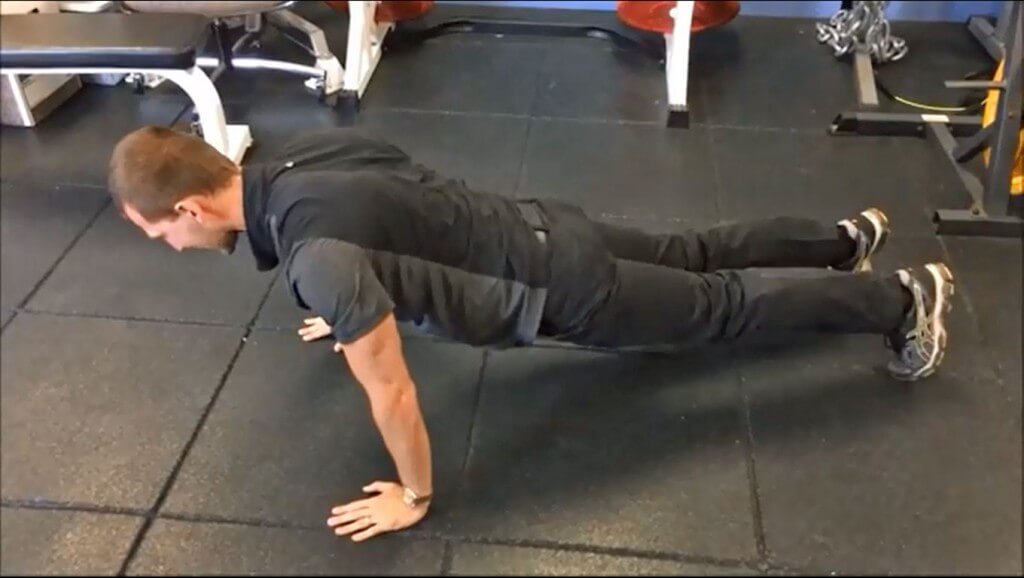The Push-Up Plus: A Solution To Abnormal Swimmer’s Posture And Shoulder Weakness

By Dr. G. John Mullen
Background:
Shoulder dysfunction, such as scapular winging, can result from continuous abnormal posture, repetitive movements with abnormal scapulohumeral rhythm, or glenohumeral and scapulothoracic muscle imbalance. The serratus anterior (SA) maintains normal scapular movement and is a focus of therapeutic exercise protocols to prevent and restore painful shoulders from winging or impingement. The push-up plus exercises have been commonly recommended to elicit and train the SA muscles; however, research shows that pectoralis major (PM) activates during the exercise. An imbalance of strength between the pectoralis major and the serratus anterior has been linked to shoulder pathologies and anterior tilting/winging of the scapula.
A recent study reviewed in the September Edition of the Swimming Science Research Review, 28 male subjects, with (n = 13; 21.8 ± 2.1 years) and without (n= 15; 23.3 ± 2.0 years) scapular winging, participated in the study. Three exercises were used: standard push-up plus (SPP), knee push-up plus (KPP), and wall push-up plus (WPP), to examine difference in electromyography (EMG) activity between pectoralis major (PM) and serratus anterior (SA) between subjects with and without winging.
Results
PM EMG activity for subjects with scapular winging was significantly greater than those in the control group. In addition, those with scapular winging were found to have less SA EMG activity than those in the control group. The PM/SA EMG ratio was significantly greater in the scapular winging group compared to the control group across all push-up plus exercises. SA EMG activity decreased in order of exercise.
Discussion
Excessive PM activation might cause decrease volume of the subacromial space, increased compressive forces on the glenoid and subacromial impingement. Greater loads of body weight or resistance may help increase the SA with the push-up plus exercise.
Practical Implication
Swimmers with shoulder pain have also shown decrease in SA activity, likely altering the position of the scapula and alters muscle activation by either weakening or fatiguing them with repeated use or non-use. To decrease PM activation when strengthening the SA, the push-up plus is an effective exercise.
Directions
In the push-up position, activate your latissimus dorsi by isometrically pulling your arms down. Next, with your elbows fixed, bring your shoulder blades together. Next, separate your shoulder blades. During this motion, keep your body straight.
Video:



